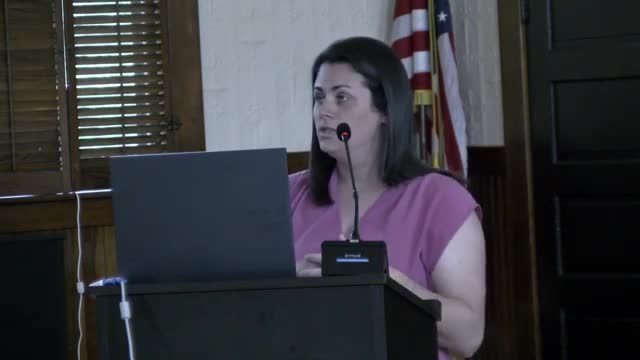Experts warn of ecological crisis as lakes reach tipping point
August 20, 2024 | West Swanzey, Cheshire County, New Hampshire

This article was created by AI summarizing key points discussed. AI makes mistakes, so for full details and context, please refer to the video of the full meeting. Please report any errors so we can fix them. Report an error »

In a recent government meeting, officials discussed the urgent need for sustainable watershed management in light of declining water quality in local lakes. Experts highlighted that the current approach is no longer viable, as lakes are reaching critical tipping points that threaten their ability to assimilate additional nutrients. This decline in water quality is linked to various issues, including harmful cyanobacteria blooms and invasive aquatic plants, which can significantly impact property values and, consequently, local tax revenues.
Jeff, a key speaker at the meeting, provided a stark financial picture, noting that the Swansea lakefront generates approximately $637,000 in annual property tax revenue. However, studies indicate that water quality deterioration can reduce property values by as much as 40%. Even a conservative estimate of a 20% decline could result in a loss of $127,000 in tax revenue for the town. This underscores the economic implications of neglecting water quality management.
The meeting also addressed the sources of phosphorus contributing to lake pollution. A modeling exercise revealed that 56% of phosphorus comes from watershed runoff, with internal loading and septic systems contributing 17% and 16%, respectively. The discussion emphasized the importance of implementing preventative measures now to avoid costly restoration efforts in the future.
A build-out analysis was presented, indicating that if future development is not carefully managed, it could exacerbate water quality issues. The analysis projected that an additional 105 buildings could be constructed in the watershed, potentially leading to an increase in phosphorus levels and an estimated 114 bloom days per year, which would affect recreational activities.
To combat these challenges, officials outlined two primary objectives: reducing existing phosphorus loading by at least 18% and managing future development to maintain current water quality conditions. The meeting concluded with a call for immediate action to implement conservation efforts and revise zoning regulations to protect the watershed and ensure the sustainability of local water resources.
Jeff, a key speaker at the meeting, provided a stark financial picture, noting that the Swansea lakefront generates approximately $637,000 in annual property tax revenue. However, studies indicate that water quality deterioration can reduce property values by as much as 40%. Even a conservative estimate of a 20% decline could result in a loss of $127,000 in tax revenue for the town. This underscores the economic implications of neglecting water quality management.
The meeting also addressed the sources of phosphorus contributing to lake pollution. A modeling exercise revealed that 56% of phosphorus comes from watershed runoff, with internal loading and septic systems contributing 17% and 16%, respectively. The discussion emphasized the importance of implementing preventative measures now to avoid costly restoration efforts in the future.
A build-out analysis was presented, indicating that if future development is not carefully managed, it could exacerbate water quality issues. The analysis projected that an additional 105 buildings could be constructed in the watershed, potentially leading to an increase in phosphorus levels and an estimated 114 bloom days per year, which would affect recreational activities.
To combat these challenges, officials outlined two primary objectives: reducing existing phosphorus loading by at least 18% and managing future development to maintain current water quality conditions. The meeting concluded with a call for immediate action to implement conservation efforts and revise zoning regulations to protect the watershed and ensure the sustainability of local water resources.
View full meeting
This article is based on a recent meeting—watch the full video and explore the complete transcript for deeper insights into the discussion.
View full meeting
